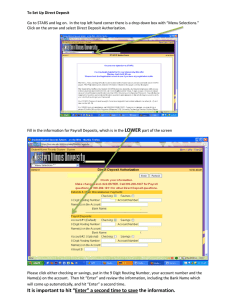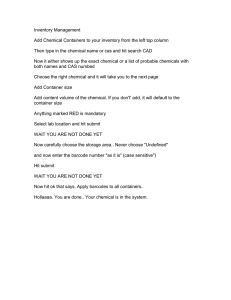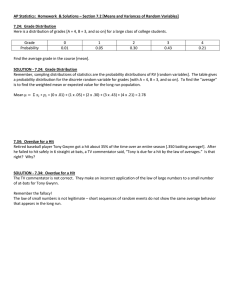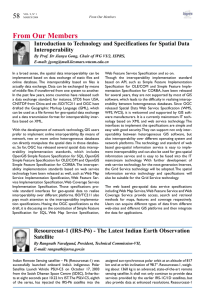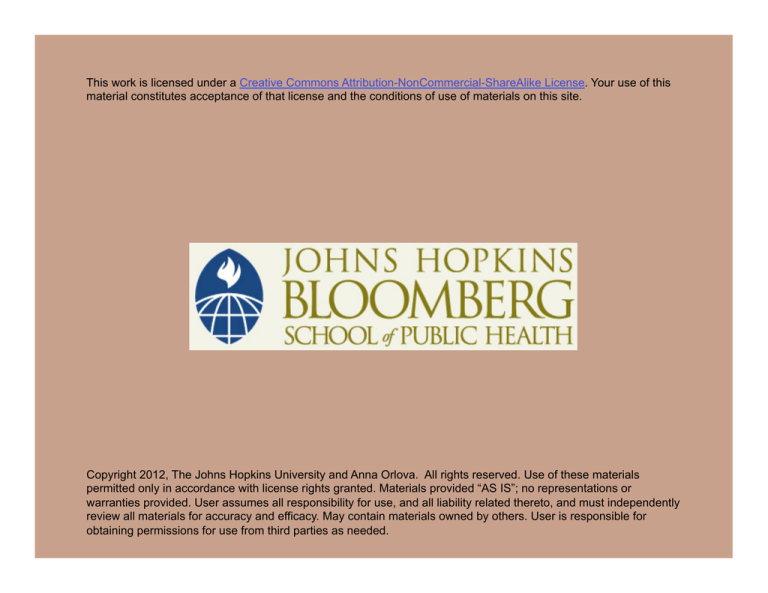
This work is licensed under a Creative Commons Attribution-NonCommercial-ShareAlike License. Your use of this
material constitutes acceptance of that license and the conditions of use of materials on this site.
Copyright 2012, The Johns Hopkins University and Anna Orlova. All rights reserved. Use of these materials
permitted only in accordance with license rights granted. Materials provided “AS IS”; no representations or
warranties provided. User assumes all responsibility for use, and all liability related thereto, and must independently
review all materials for accuracy and efficacy. May contain materials owned by others. User is responsible for
obtaining permissions for use from third parties as needed.
Welcome to Standards and Interoperability
in Health Systems
Anna O. Orlova, PhD
Johns Hopkins Bloomberg School of Public Health
A Little Bit About Me
PhD, Moscow State
University
Soviet Union
- Technology in
industrial waste
United States
- Lead poison
prevention
program, Kennedy
Krieger Institute
- Health sciences
informatics program
3
Course Aims
Learn from the experiences of you and your colleagues
Course designed for “users”
- Public health practitioners
- Clinicians
- Health educators
- Others who work with technology on a daily basis
4
Course Objectives
Describe health information exchanges (HIEs) between clinical and
public health/population health data systems
Explain the main categories of health information technology (HIT)
standards
Discuss HIT standardization processes and entities
Describe the role of users in HIT standardization
Participate in the design of information systems in public health
5
Expectations
At the end of the course, you should be able to:
- Discuss HIT standardization processes and entities
- Participate as users in HIT standardization activities
- Develop a functional requirements specification document
(functional standard) for the information system for a specific
public health problem/domain
6
Course Topics
1. Towards a Nationwide Health Information Network
2. HIT Standards and HIT Standardization
3. Health Information Systems Interoperability
7
Course Topics
4. Towards Business Process Standards
5. Functional Standards
6. Data Content Standards
7. Information Content Standards
8. Information Exchange Standards
9. Identifiers Standard
10. Privacy and Security Standards
8
Course Topics
11. Harmonization and Trial Implementation
12. Testing and Products Certification
13. International Perspectives
14. You will present a functional requirements specification document
for an information system for a selected public health problem
15. Deployment of Standards-Based HIT Solutions in Public Health
Practice: Case Studies
9
Course Assignments
Discussion questions for each topic
Group project—student presentation
- Design of the information system for a selected public health
problem
Group project—final assignment
- Functional requirements specification document for an
information system for a selected public health problem
(domain)
10
Final Assignment
Develop the 10-page functional requirements specification
document (requirement analysis document [RAD]) for a selected
clinical–public health information exchange
Due date: two weeks after final session of course
11
Final Assignment: Interoperability
Outline
1. Introduction
1.1. Description of a public health (or clinical) problem (domain) (business
processes)
1.2. Purpose of the proposed information system
1.3. Actors and scope of the proposed system
1.4. Objectives and success criteria of the project
2.
3.
System requirements
2.1. Functional requirements
2.3. Non-functional requirements
System models
3.1. Use case(s) description
3.2. Use case models
3.2.1. Use case diagram(s)
3.2.2. Dataflow and workflow diagram (activity diagram)
4.
3.3. High-level system architecture
Selected standards
5.
6.
Hardware and software requirements
Testing/evaluation plan
7.
Project development timeline
12
Functional Requirements Specification Document
Functional requirements specification—functional requirements
analysis document (FRAD)
- Describes a problem as a business process (e.g., taking care of
patient, conducting a public health case investigation or disease
surveillance or health education) for which public health
practitioners, clinicians, patients, and the public need to
exchange information using information technology (database,
information system)
The FRAD describes your (user) needs for the information system
(business processes and functional requirements for the system)
- In your own words
- In the format of the requirements analysis document (RAD)
- That will help IT vendors to better design an information system
- That will meet your (user) needs
13
Final Assignment Grading
The assignment will be graded on two criteria
1. The extent to which the document is internally consistent
2. The extent to which informatics concepts from lectures and
readings are utilized
The document is limited to 10 pages maximum, excluding the title
page
- Only the first 10 pages of the document will be graded
The title page will include:
-
-
Name of the project
The names of the group members with their roles in the project
The reference list will be included in the 10-page limit
14
Interoperability
Health information technology standards and systems
interoperability
- Student presentation
Each students will develop a MS PowerPoint™ presentation
on the Functional Requirements of the Information System
for a Selected Clinical–Public Health Information Exchange
describing the process of the development of the
functional requirements for the information system for the
public health problem selected for the final assignment
Presentations are due one week after Session 12. They
will be open for viewing and comments from the class
during Session 14.
15
Student Presentation: Interoperability
Outline
Slide 1
Title, list of group members with roles in the project
Slide 2
Public health (clinical) problem overview
Slide 3
Information systems overview and scope
Slide 4
Information systems goals (WHAT)
Slide 5
Actors (perspectives) (WHO)
Slide 6
Functions that system will support (HOW)
Slide 7
Nonfunctional requirements
Slides 8
and 9
Use case(s); use case diagram(s); workflow and dataflow diagram(s)
Slide 10
Proposed system architecture
Slide 11
Selected standards
Slide 12
Hardware and software requirements
Slide 13
Evaluation plan
Slide 14
System development timeline and deliverables
16
How to Organize Your Group Project
Students will work in groups of from four to six persons representing
the following participants in the design of the information system:
- From two to four actors-users (physician, laboratory personnel,
public health official, researcher, funder, etc.)
- One system designer
- One project manager—group leader
17
Student Evaluation
Student evaluation will be based on:
- Participation in class discussions (33%)
- Student presentation (33%)
- Final assignment (34%)
Grades will be assigned based on demonstrated ability to utilize
concepts from lectures and readings
18
Resources
Reading materials will be available online
Please feel free to recommend additional resources
19
An Added Note
Repetition
- Several standards-development organizations appear throughout
the lectures—this repetition is deliberate because these
organizations are developing different types of standards that
we will cover in this course
Guest speakers
- We will have several guest lecturers who may bring different
perspectives on the subject matter
20
How to Succeed in This Course
Plan each week to accommodate this course’s significant workload
Read the syllabus
Follow the instructions throughout the course Web site
Listen to all lectures
Plan sufficient time to complete group assignments
Participate fully in group work
Complete all assignments on time
21
This Course Is a Course on Standards
Standards = doing things in a certain way
These standards are necessary so that machines, i.e., information
systems, will be able to support your work
Please do not view this approach as a limitation or pressure, but as
a necessary structure
22
Coming up Next …
Coming up Next …
23

